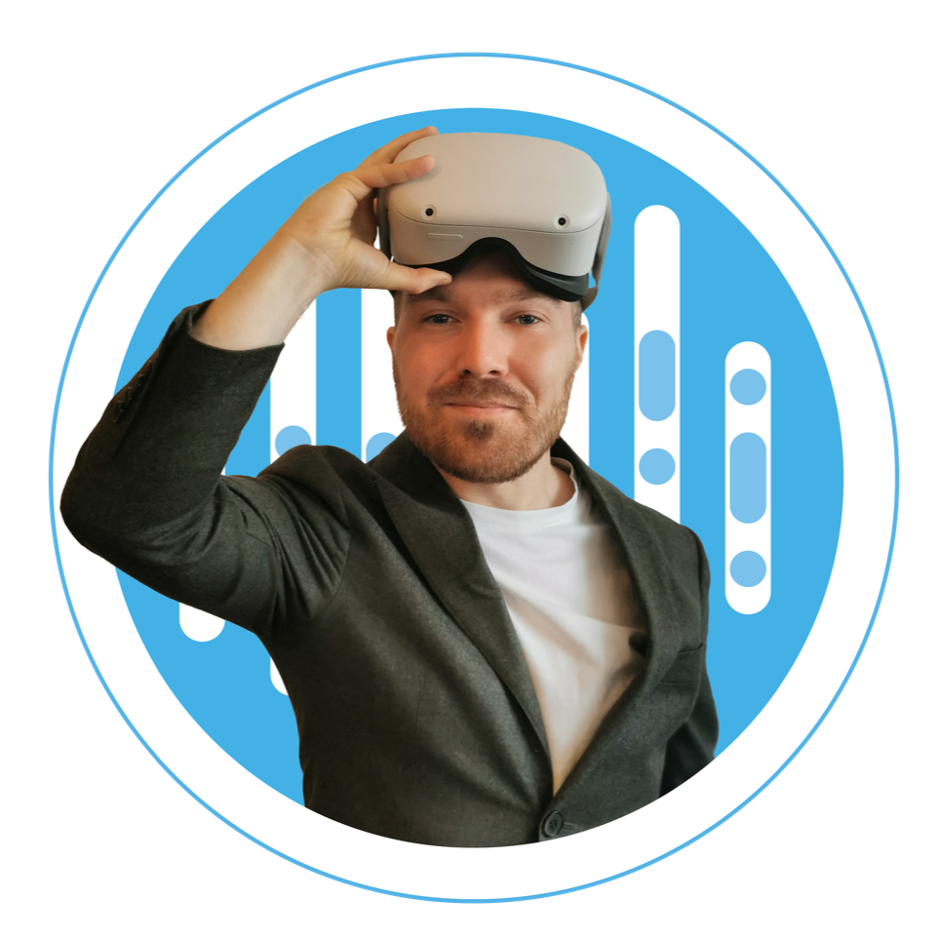Practical Thoughts Blog

Virtual Reality for Speech Therapy? SOON!
Sep 23, 2021From Nina and Scott:
One of our goals at Stuttering Therapy Resources is to keep our readers informed about new developments in our field. Sometimes these developments involve technological advances that may ultimately improve our ability to help people who stutter. In this guest blog post, Gareth Walkom from withVR describes ways that Virtual Reality may soon provide a way for people who stutter to experience real-world speaking situations while still in the therapy room. Take a look:
Do you remember when you got your first laptop for your clinic? How did you feel leading up to that? Uneasy, uncomfortable, or even worried that it wouldn't support your clients’ needs? How about when you got your first tablet? I bet it was something similar.
Hello! My name is Gareth Walkom, I stutter, and I wouldn't change it for the world! Since 2015 I've been researching how the speech disorder community can benefit from virtual reality.
Whenever we hear about something new, we can sometimes be skeptical about it, and that's okay. At first, new technology can seem complex, expensive, and difficult to use. But isn't that how you felt about your first laptop or iPad or Zoom therapy session? I bet you couldn't imagine your clinic or school therapy room without them today.
Every now and then, something great comes along. This “something” is revolutionary—it has the potential to bbe more valuable than we have ever imagined; a tool that not only aids our work but also connects us to one another and changes the lives of many in the process.
In my opinion, this “next gen” therapy tool for SLPs is virtual reality (VR).
My Why
My goal is to develop VR into something that every SLP can access in order to better serve their clients’ needs. On the 22nd of October 2020 (International Stuttering Awareness Day), I created, withVR. My vision is to better prepare people with speech disorders for real-life speaking situations by harnessing the power of virtual reality to ensure that anyone can use their voice whenever they like, no matter their difference.
Applications for Therapy
Think about how you practice speaking situations with your clients. How do you desensitize them to the real world? Perhaps you role-play or have them use their imagination. How does this go? Is it an accurate representation of the actual speaking situation? Does your client feel like they are actually there?
What you're identifying right now is a gap. A leap that, for many people, can hard to take. In the therapy room, it is difficult to accurately recreate real speaking situations, so clients must venture out into the outside world on their own as they work to expand their comfort zone.
How can we bridge this gap and make the leap smaller so that people have the time and support they need to take transfer skills learned in therapy into the outside world? To me, the answer is virtual reality (VR)!
Virtual reality has been around for a long time, and it has even been studied with people who stutter (e.g. Brundage & Hancock, 2015, American Journal of Speech-Language Pathology) to show that VR can indeed be used to “evoke feelings and behaviors” that are commonly addressed in stuttering therapy..
Over time, the technology has developed. Today, VR is more realistic, effective, and inexpensive than ever before. With VR, we can fully immerse ourselves in a totally new environment; , and research has shown that people in VR believe that they are actually present in that environment.
Using VR, you can create any speaking situation you like (e.g., a job interview or presentation), control it in any way you like (e.g., by changing the size or reactions of a virtual audience), and even stop or change it at any time. Students can practice communication goals in ways they could never have imagined even without leaving the clinical setting. Research shownn that VR can help people become less anxious, improve their speech behaviors, and have a safe space to speak.
In the future, innovative apps will allow people to work on their speaking goals on their own time. Such apps would keep track of progress in speaking situations similar to those used by SLPs in the clinic so that speakers practice at home, one step closer to the outside world. Incorporating these types of tools in therapy can also help clinicians to save valuable therapy time and promote accountability.
I am excited to be a part of this technological development. Currently, withVR is collaborating with over 60 clinics, labs, and hospitals from 20 countries worldwide in order to leverage the knowledge of visionary experts in speech disorders and harness the potential that virtual reality has to offer. We have all taken the leap of getting a laptop, then an tablet…Now, we’re getting ready for virtual reality!
More from Scott and Nina:
If you would like more information, you can reach Gareth directly at gareth@withvr.app or via the website https://withvr.app
Or connect with him on social media:
Subscribe to withVR newsletter Instagram, Facebook, Twitter, LinkedIn




